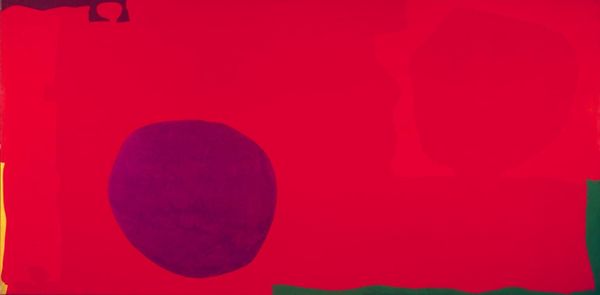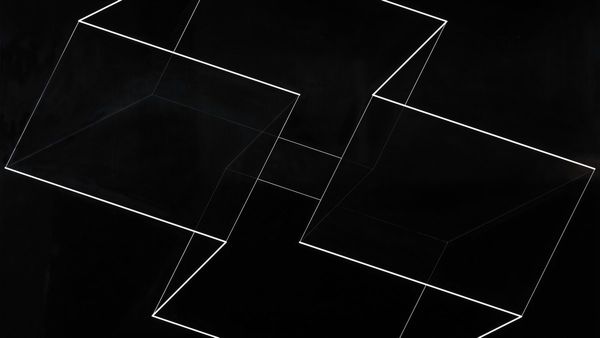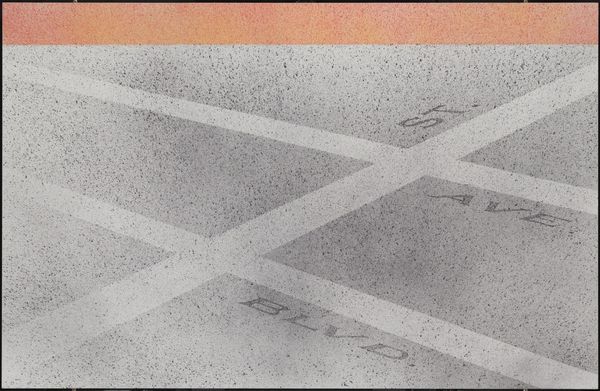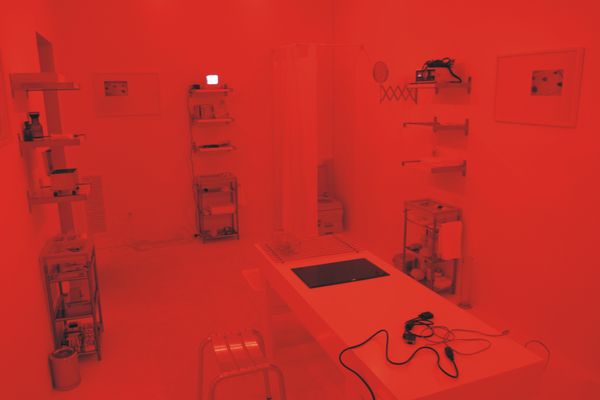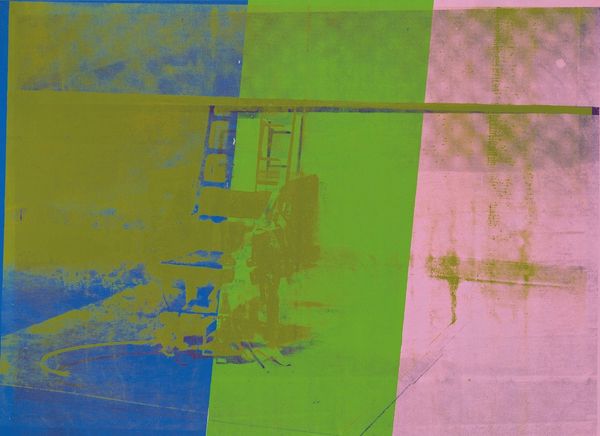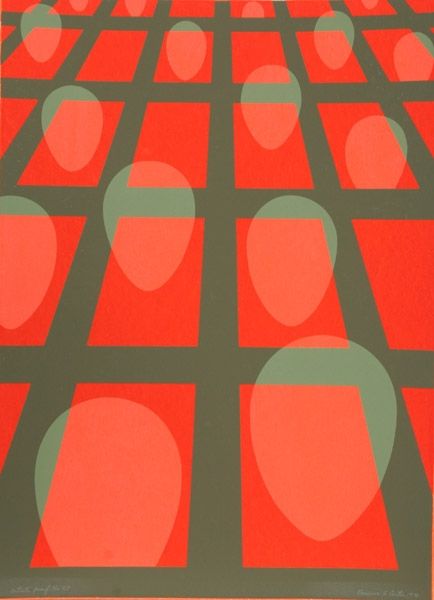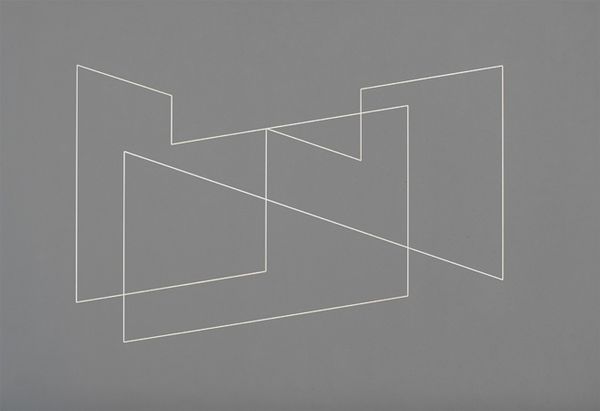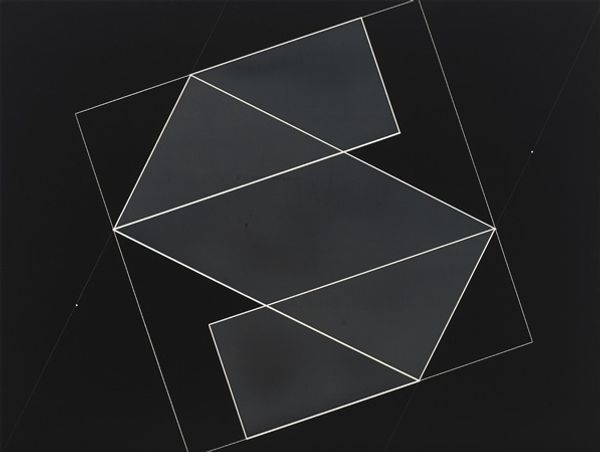
Copyright: Wanda Koop,Fair Use
Curator: "Untitled (Brilliant Red Digital Breakup Lights)" by Wanda Koop from 2004. The description mentions it's made with acrylic paint. The pervasive red gives me a slightly unsettling feeling, and I'm intrigued by the geometric shapes and the suggestion of a landscape. What stands out to you in this work? Editor: Well, I'm immediately drawn to the title, "Digital Breakup Lights." Considering its date, 2004, it makes me wonder about the then-emerging digital culture and its impact on our perception of landscape. Focusing on the "digital breakup" part – how might the artist be using materials and form to comment on technological disruption, specifically at the time this work was created? Curator: Good question! Think about Koop's choice of acrylic. It’s a synthetic material, mass-produced and widely available. Does it serve as a stand-in for digital ubiquity? The "breakup" could also refer to the deconstruction of traditional landscape painting. Those geometric forms disrupt a seamless vista. How does she "manufacture" space and the very sensation of digital life here? Is she celebrating the promise or mourning a loss, or something else? Editor: I see what you mean. The red, almost like an alarm, combined with the manufactured, precise geometric forms, leans towards a critique. It feels less like a celebration of the digital world and more like a commentary on its potential to alienate. Maybe she's linking the red to stoplights or some danger signal of modern transit and urban space. What if she wants us to think of a red light district that we drive through, unfeeling and dehumanized. Curator: Exactly! Considering the social context, with increased globalization and reliance on technology, perhaps Koop critiques the increasingly manufactured and mediated experience of nature and place. Does the title also maybe comment on geopolitical themes? Editor: It's fascinating to consider the work in terms of materiality and social context. It definitely shifted my initial reading, which was purely aesthetic, to one much more critical and engaged with broader issues of technology, society, and alienation. I guess thinking about how the artist manufactures a feeling helps understand its place. Curator: Absolutely. It underscores the point that the “what” and “how” of art creation always deeply ties into the "why." That simple observation reveals the whole political economy behind artistic manufacture!
Comments
No comments
Be the first to comment and join the conversation on the ultimate creative platform.
